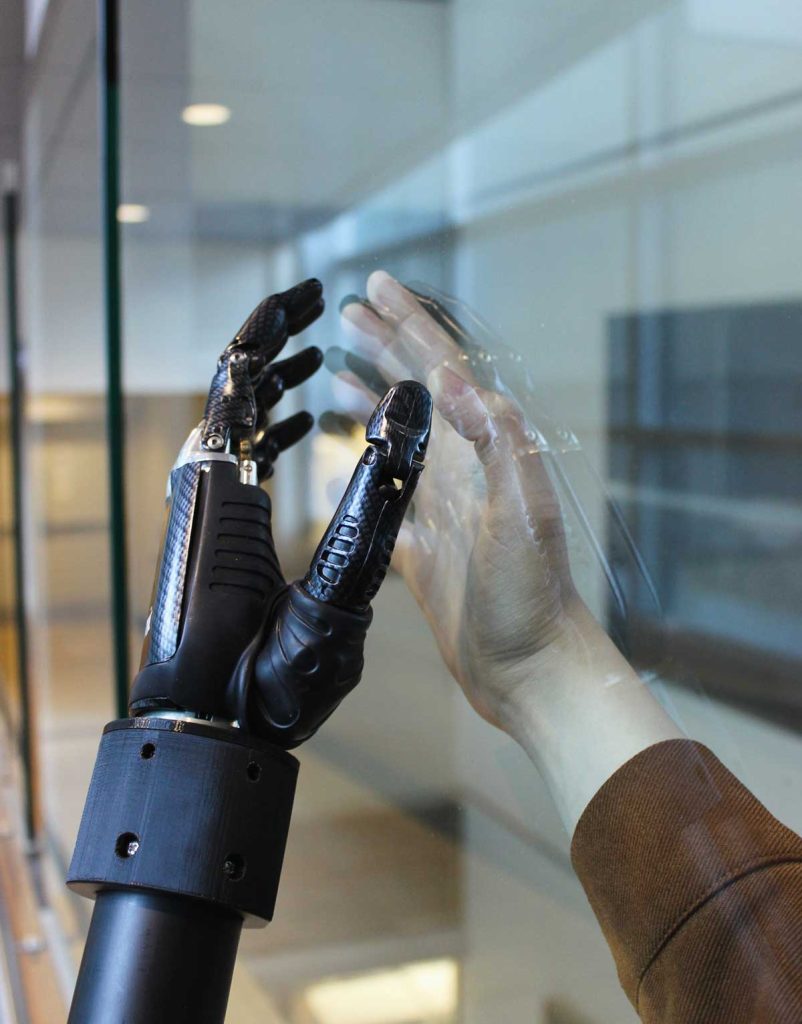Submission 2024
| Submitted by: | Salma Soliman |
| Department: | Biomedical Engineering |
| Faculty: | Engineering |
In the field of prosthetic rehabilitation, an invisible barrier exists. This photograph serves as a powerful metaphor for the gap that exists between the promise of advanced prosthetic technology and the lived experience of prosthesis users.
Despite remarkable progress in prosthetic technology, mastering the control of these devices remains a formidable challenge. The journey to control these devices is long and demanding, requiring weeks, if not months, of intensive training. Even then, the simplest of actions, like holding a water bottle, can be a tremendous task, both physically and mentally. There is always a barrier that stands between prosthesis users and their desired performance.
My research focuses on enhancing training methods by testing novel techniques to improve prosthesis control. It aims to empower prosthesis users to establish a deeper connection with their artificial limbs, ultimately enhancing their ability to operate their prostheses with confidence and skill. Through my research, I hope to break through the invisible barrier and pave the way for a future where prosthetic technology seamlessly integrates with the human experience.
Was your image created using Generative AI?
No.
How was your image created?
To create the image, I used one of the Bionic prostheses from my lab, the BLINC (Bionic Limbs for Improved Natural Control) lab. I placed the prosthetic hand against a glass window in the building and asked my friend to put her hand on the other side. I captured the picture in such a way that it shows the reflection of the prosthetic hand while also displaying her hand.

